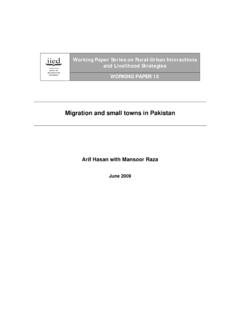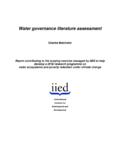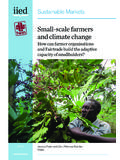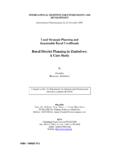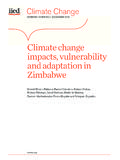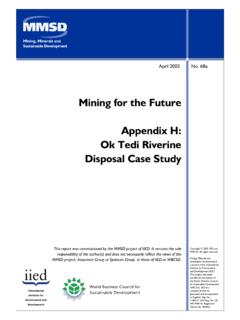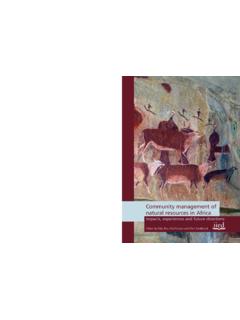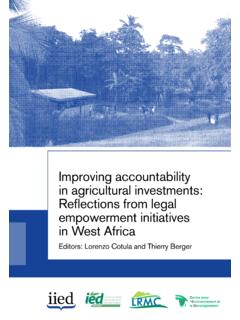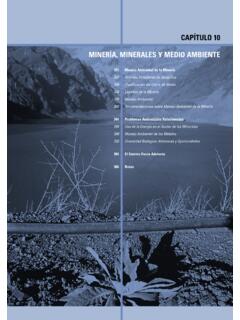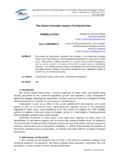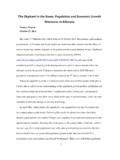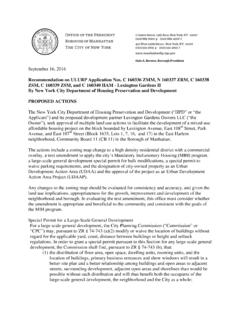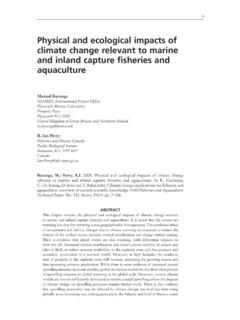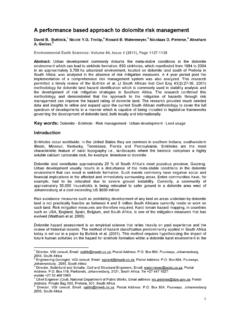Transcription of Urbanisation concepts and trends
1 Working PaperJune 2014 UrbanKeywords:human settlements, Urbanisation , urban development, citiesUrbanisation concepts and trendsGordon McGranahan and David SatterthwaiteInternational Institute for Environment and Development 80-86 Gray s Inn Road, London WC1X 8NH, UK Tel: +44 (0)20 3463 7399 Fax: +44 (0)20 3514 9055 email: @iied more publications at the authorsGordon McGranahan: Principal Researcher, Human Settlements Group, IIED. Email Satterthwaite: Senior Fellow, Human Settlements Group, IIED. Produced by IIED s Human Settlements groupThe Human Settlements Group works to reduce poverty and improve health and housing conditions in the urban centres of Africa, Asia and Latin America.
2 It seeks to combine this with promoting good governance and more ecologically sustainable patterns of urban development and rural- urban shorter version of this Working Paper will appear as the entry on Urbanisation by Gordon McGranahan in Elsevier s International Encyclopedia of Social and Behavioral Science, second edition, edited by James D. Wright, expected to be published in 2014 or 2015. UPDATED VERSION published by IIED, August 2014(to include more recently released statistics on urban and rural population prospects)Originallly published by IIED, June 2014 Gordon McGranahan and David Satterthwaite. 2014. Urbanisation concepts and trends . IIED Working Paper.
3 IIED, BN 978-1-784 31- 0 6 3-9 Printed on recycled paper with vegetable-based WorKInG PAPErThere is an emerging consensus that Urbanisation is critically important to international development, but considerable confusion over what Urbanisation actually is; whether it is accelerating or slowing; whether it should be encouraged or discouraged; and, more generally, what the responses should be. This Working Paper reviews some key conceptual issues and summarises Urbanisation trends . It ends with a brief review of Urbanisation and sustainable development, concluding that although Urbanisation brings serious challenges, attempts to inhibit it through exclusionary policies are likely to be economically, socially and environmentally damaging.
4 Moreover, with the right support Urbanisation can become an important element of sustainable 41 Background 62 Interpreting and misinterpreting international statistics on urban populations Using different definitions of urban Confusing urban population growth, Urbanisation and rural- urban migration relying on old census data and simple population projections 83 Estimates of past and future urban populations and Urbanisation levels 104 Moving beyond the rural/ urban dichotomy 15 Changing settlement sizes Peri- urban growth Urbanisation and rural- urban linkages 175 Urbanisation and sustainable development Urbanisation and economic development Urbanisation .
5 Inequality and social exclusion Urbanisation and shifting environmental burdens 21 References 23 Related reading 26 3 Urbanisation concepts and trends4 by standard demographic definitions and official data, many of the more common international claims about Urbanisation are wrong: Africa is not the fastest urbanising continent (Asia is); the rate of Urbanisation in low-income countries is not unprecedented or accelerating (indeed it has been falling for decades now); megacities are not becoming the predominant urban form (megacities, with populations over 10 million only account for 10 per cent of urban population and most are not growing particularly fast); and Urbanisation is not the primary driver of urban land expansion (declining urban densities and natural population growth contribute comparable shares).
6 Most importantly, we are not facing an urban explosion that needs to be restrained, but the latter part of an urban transition that needs to be Working Paper examines some of the sources of conceptual and empirical confusion about Urbanisation and reviews what we know about Urbanisation and its relations to sustainable development. This relatively simple and straightforward account is intended to assist those attempting to understand the implications of Urbanisation for their own local or international attempts to contribute to sustainable development. To reiterate, it treats Urbanisation not as a path towards future crisis or plenty, but as an ongoing transition that provides economic, social and even environmental opportunities, as long as they are seized.
7 Major sources of demographic confusion about Urbanisation include: Different definitions of urban . Even United nations statistics on urban and rural populations rely on definitions of rural and urban that vary between countries. only about one-quarter of countries rely only on criteria related to population size and (less often) density, and though most include population criteria along with others, these population criteria themselves vary considerably. Although most size criteria fall between 1,000 and 5,000, in Sweden 200 people can form an urban settlement, whereas in Mali the last census set a minimum of 40,000. In many countries, urban and administrative status are linked, and the majority of countries also include administrative criteria in their urban definition.
8 Administrative status is correlated with population characteristics but not in a straightforward way. As such, there are cases where surprising statistics on urban populations and population shares are rooted in surprising definitions of urban . Different definitions of Urbanisation . It is generally accepted that Urbanisation involves the shift in population from rural to urban settlements. From a demographic perspective, the Urbanisation level is best measured by the urban population share, with the Urbanisation rate being the rate at which that share is growing. It is confusing when people use Urbanisation to refer instead to urban population growth: when urban and rural populations grow together this is not really Urbanisation ; and, because of overall population growth, the current rate at which urban populations are growing globally is about twice the rate at which the urban share is growing.
9 It is even more confusing when Urbanisation is used to refer to the expansion of urban land cover: the rate at which urban land cover is expanding is about three times the rate at which the urban share is growing; and although Urbanisation involves increasing settlement density, urban land cover expansion is increasingly driven by declining settlement density. A reliance on census data and simplified urban projection techniques. Particularly in low-income countries, accurate urban and rural population estimates rely on censuses that take place about once a decade, and in times of economic difficulties or conflict may take place far more rarely. Even estimates of current population are sometimes based on projections of census data from many years ago.
10 The United nations projections have been revised over the years, but remain relatively simple, making no attempt to take account of changes in, for example, economic circumstances. As such, when claims are made about Urbanisation continuing unabated despite a lack of economic growth, as for Africa before the recent growth spurt, these need to be scrutinised carefully. Despite the uncertainties in the sizes of urban and rural population, the broad outlines of the ongoing urban transition are clear. United nations statistics had the world becoming half urban in 2007, and this was a rough but reasonable estimate. There is quite a close correlation between the level of Urbanisation and economic status, and it might well be closer still with better statistics.
